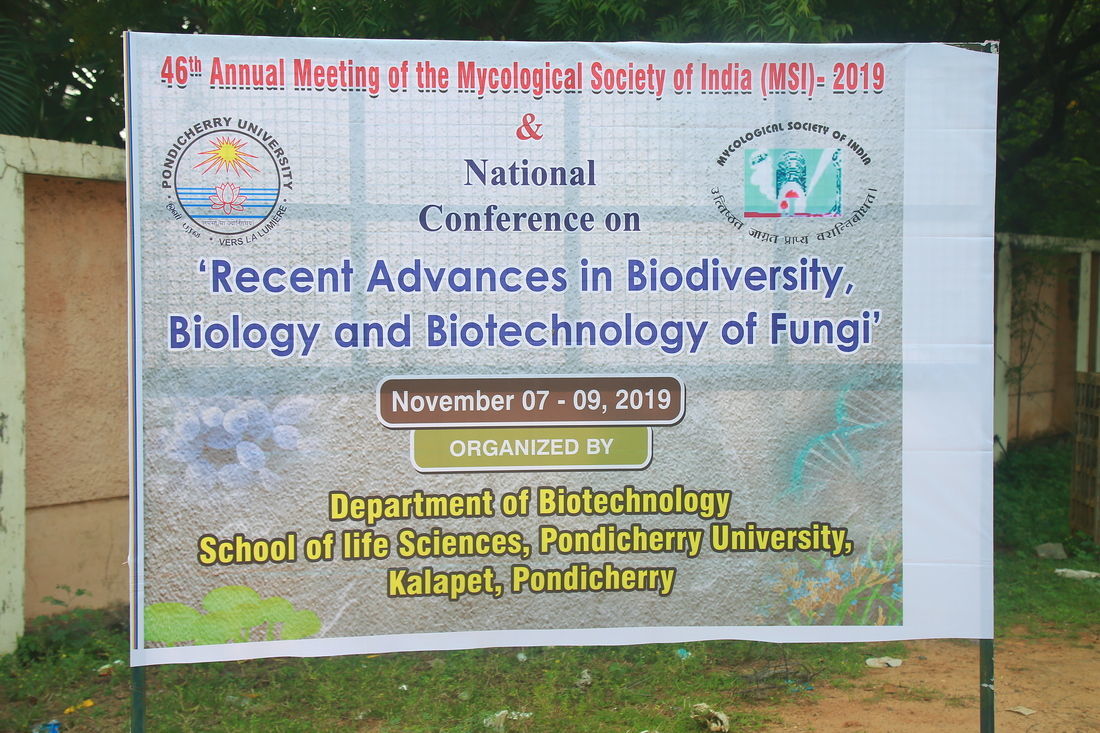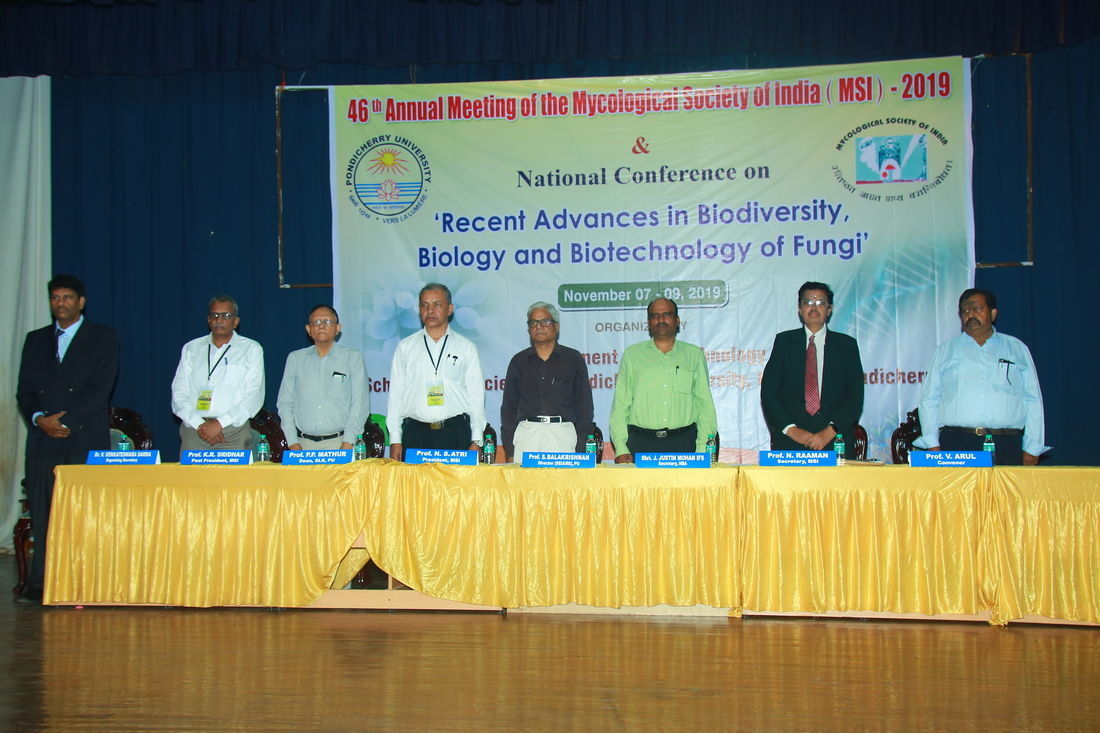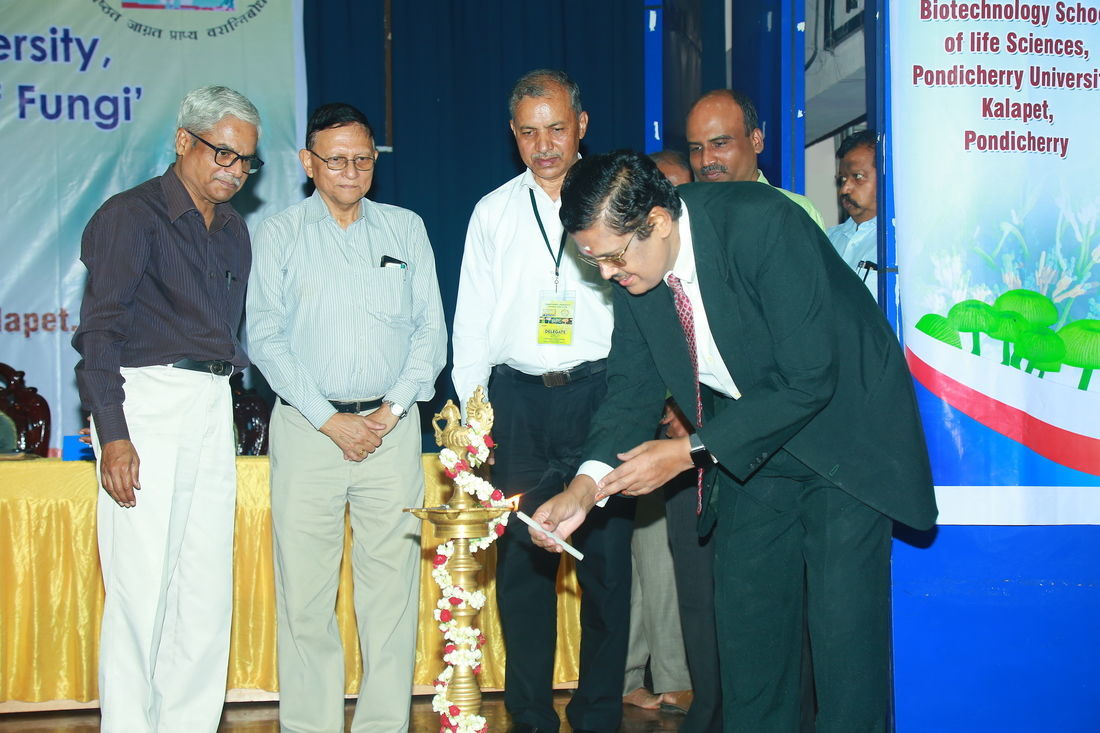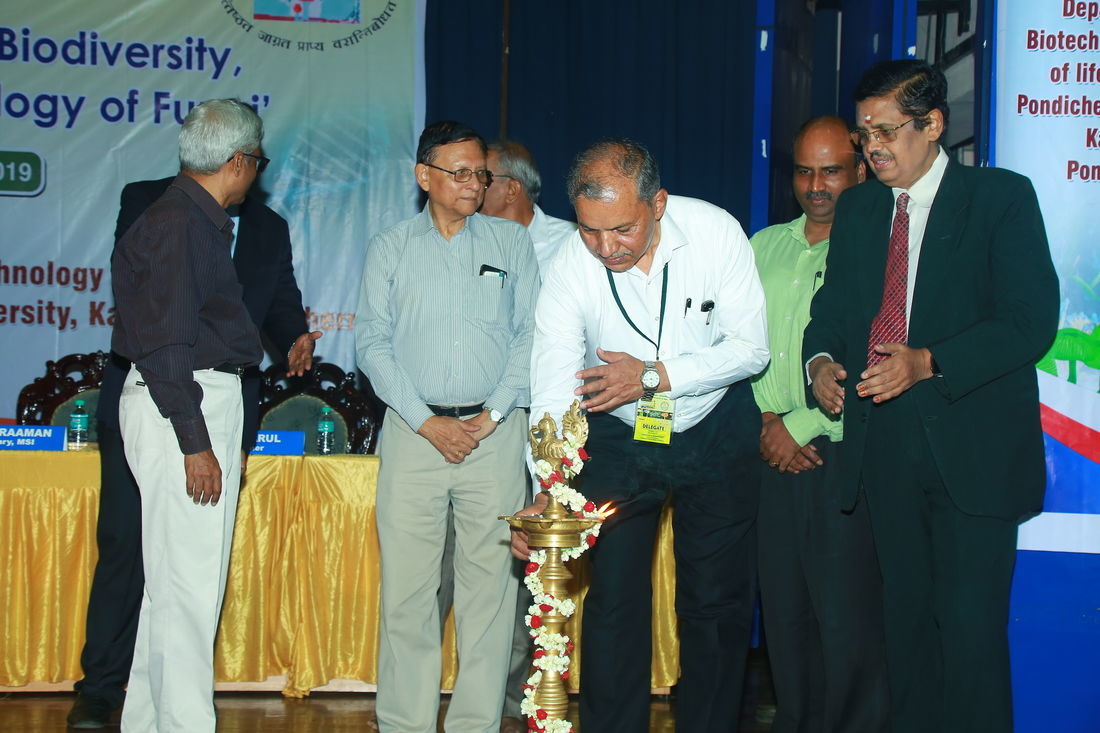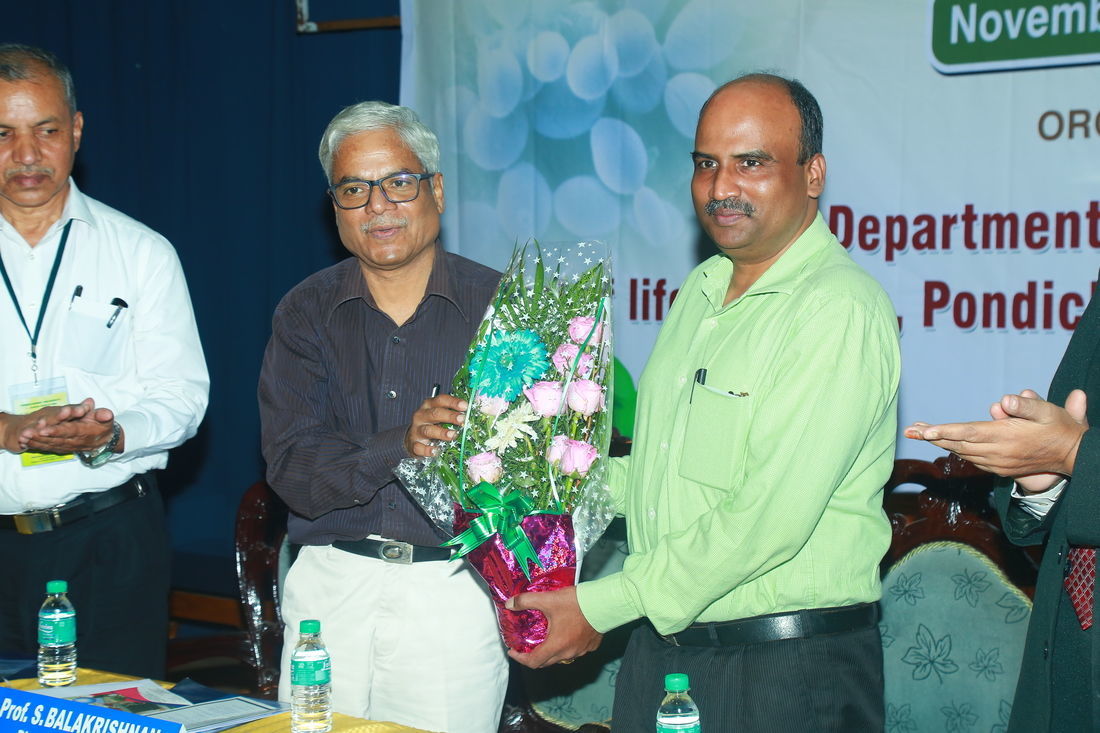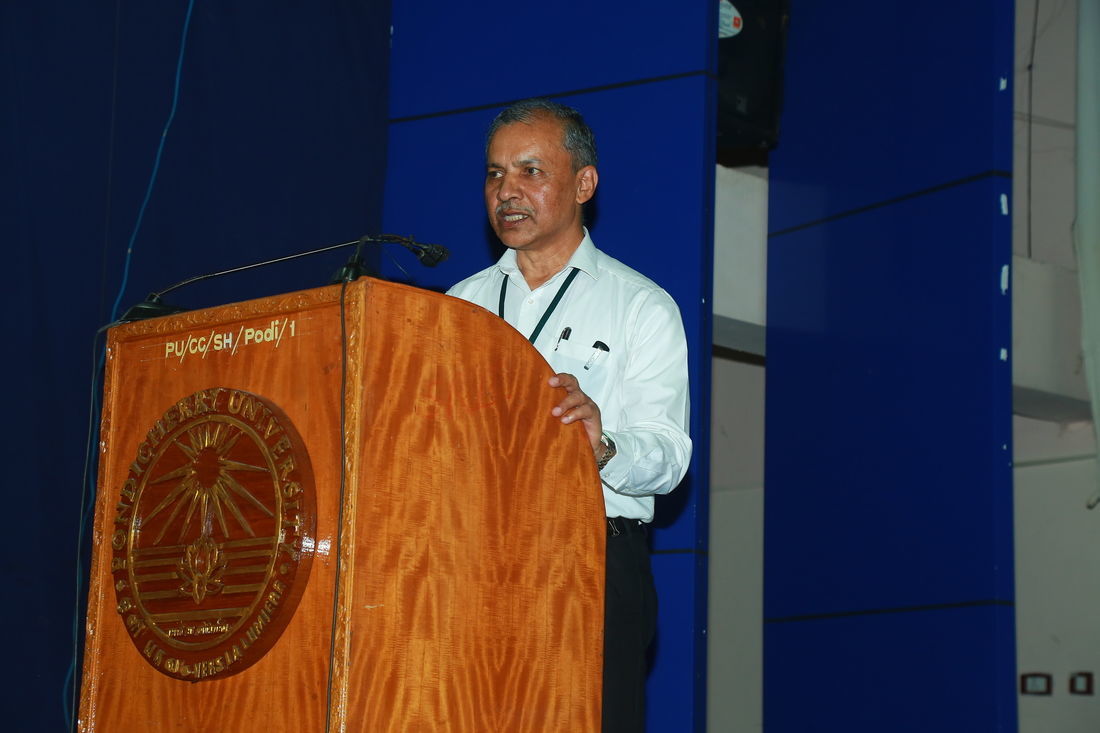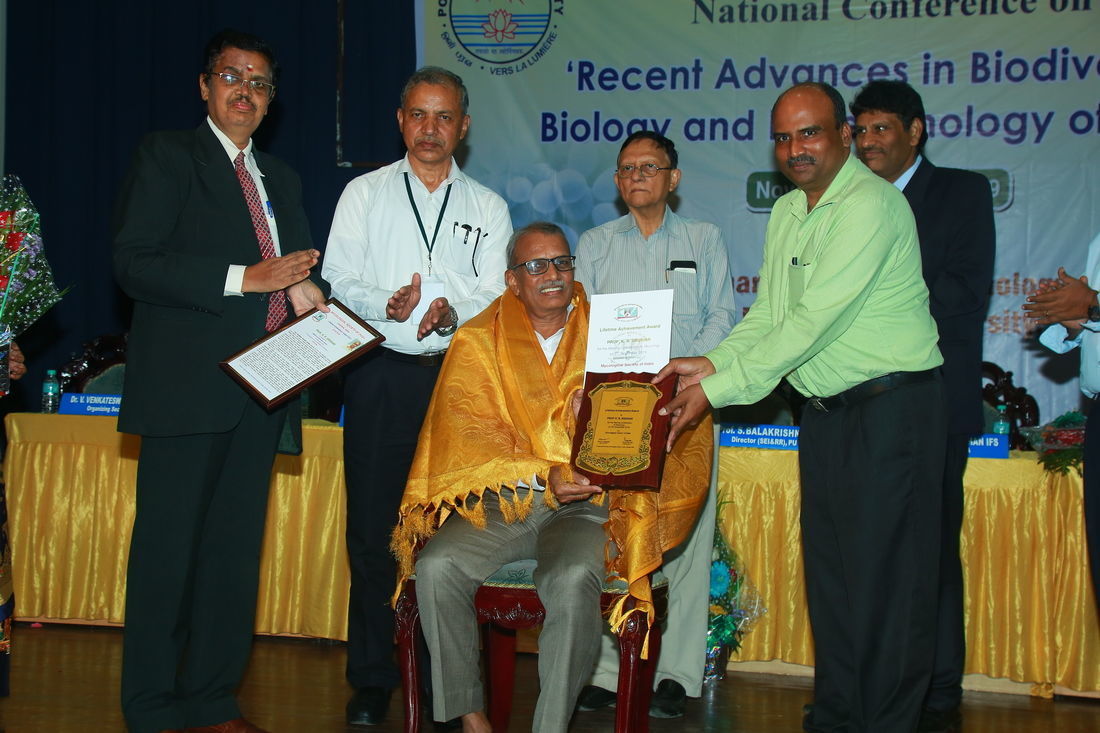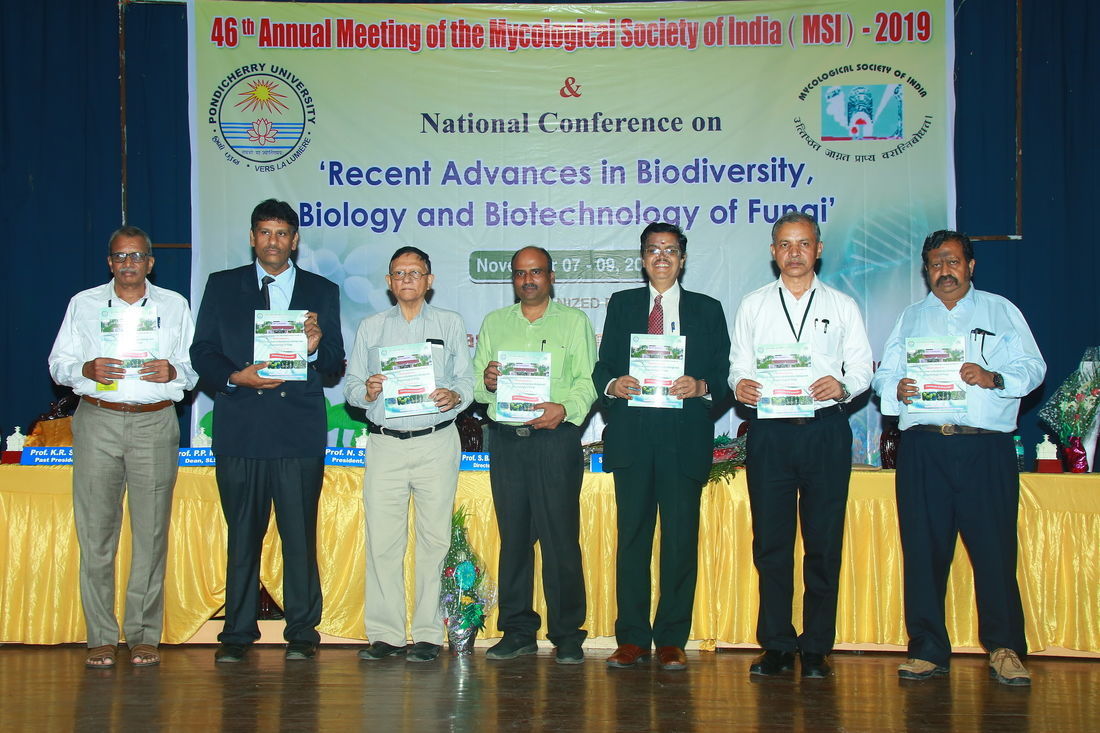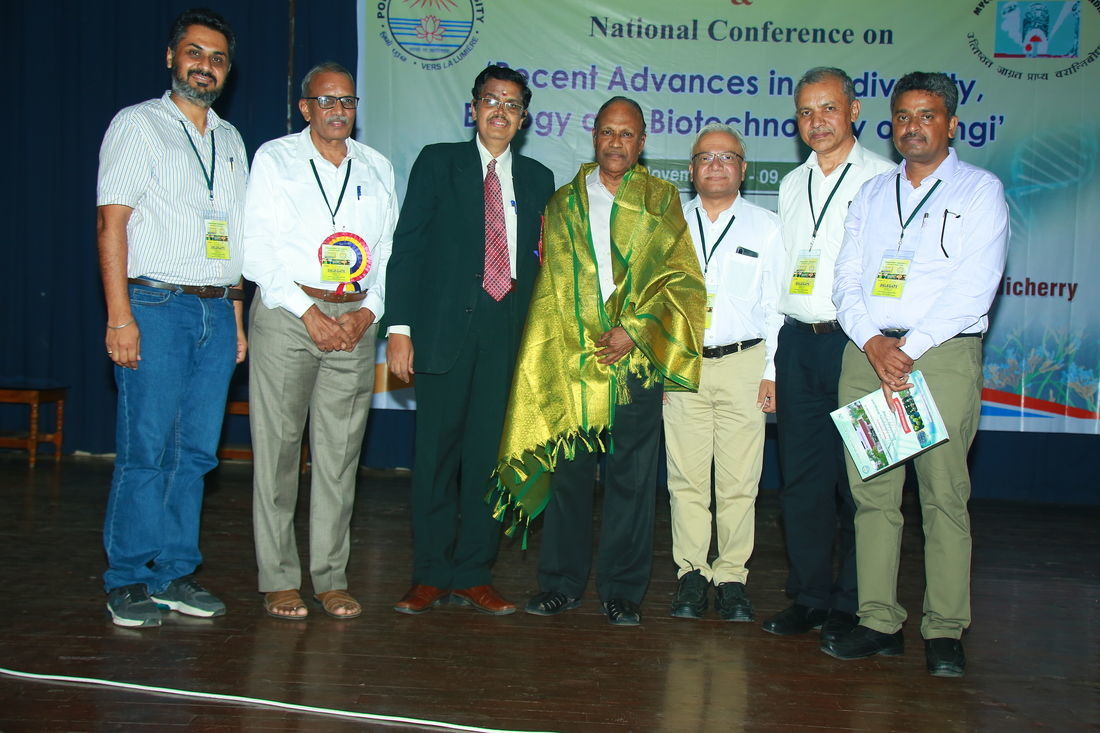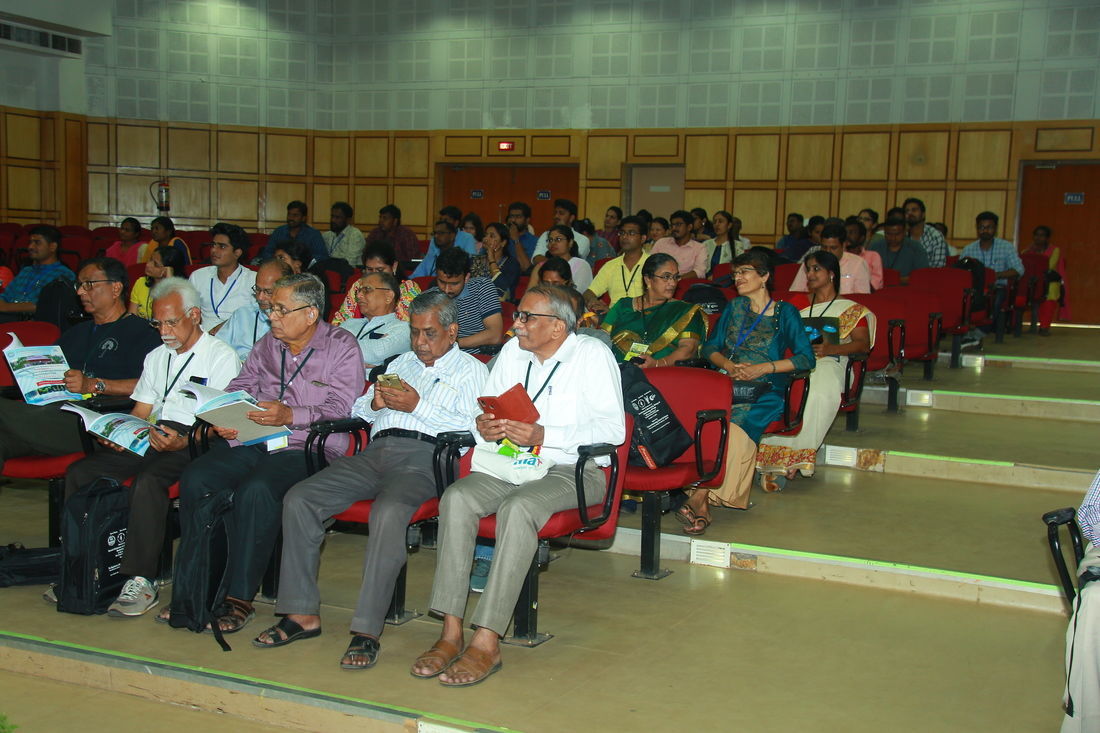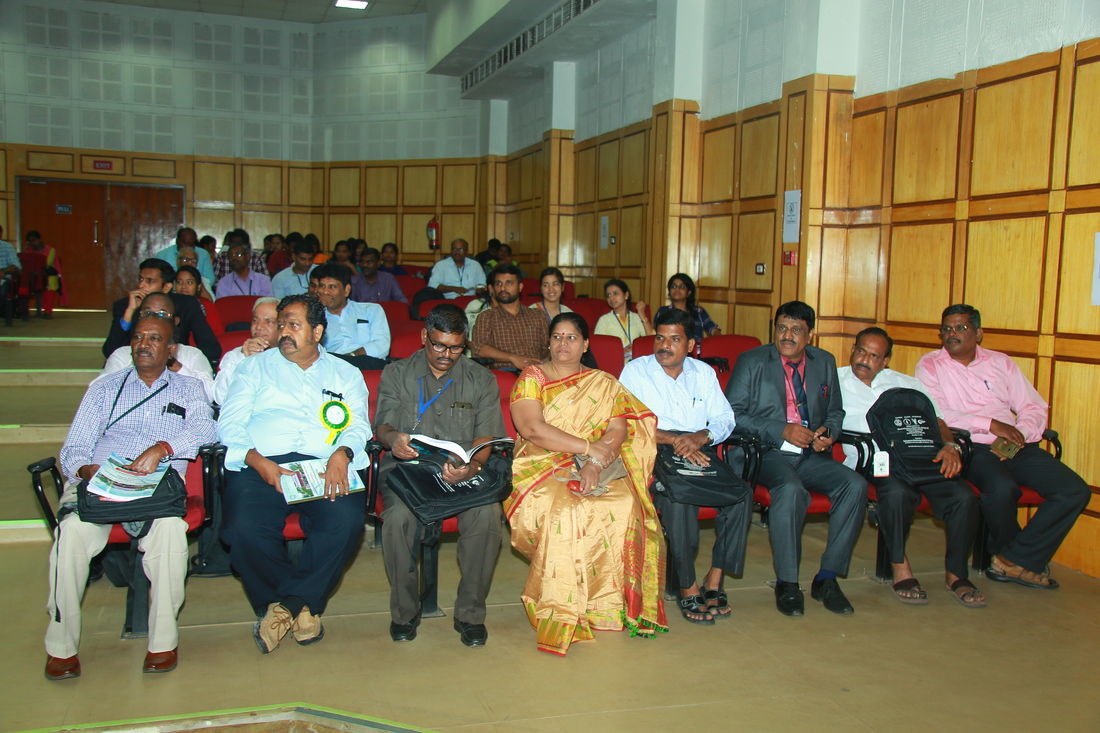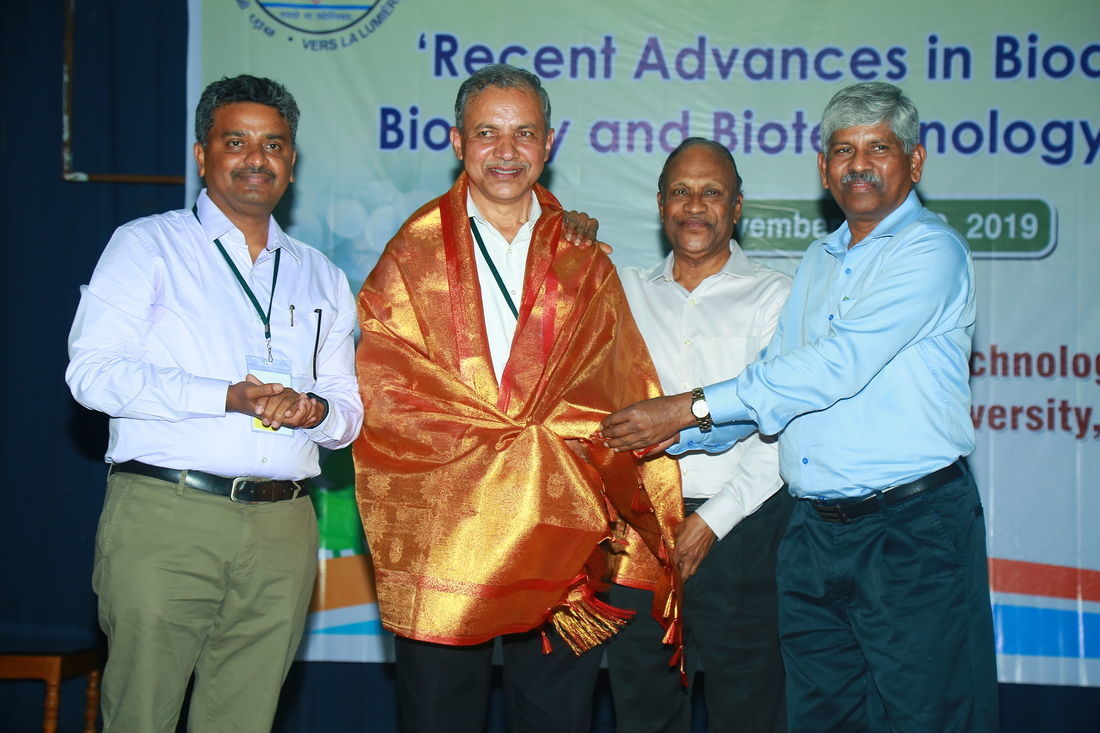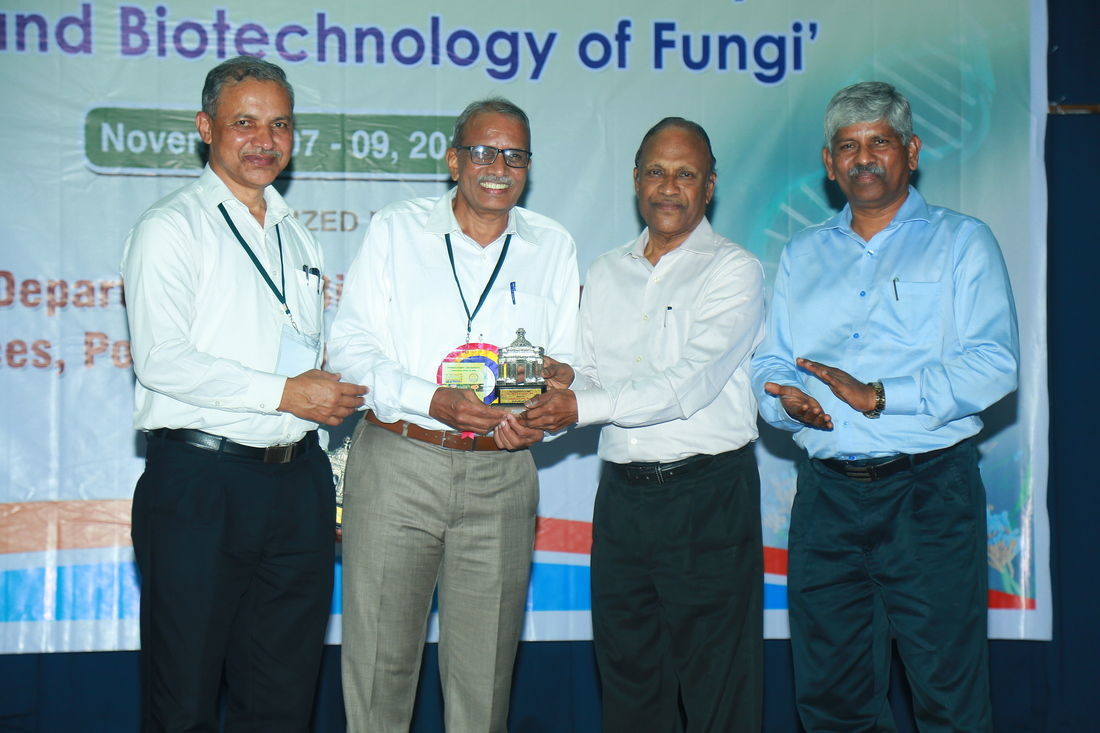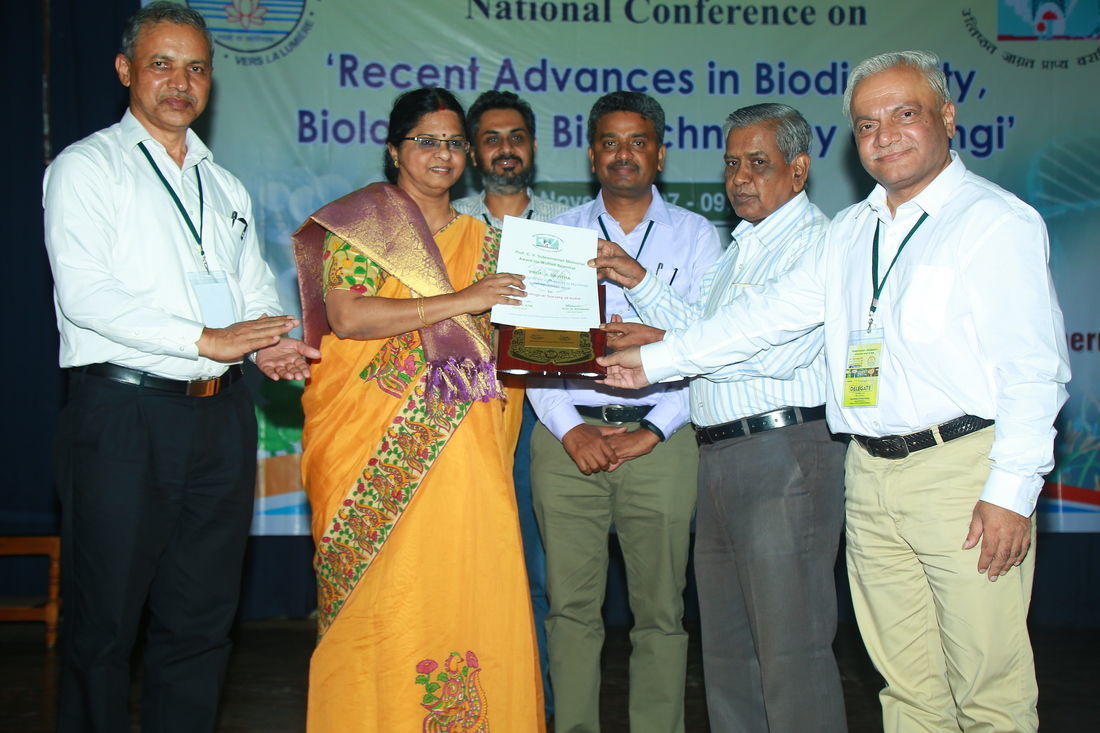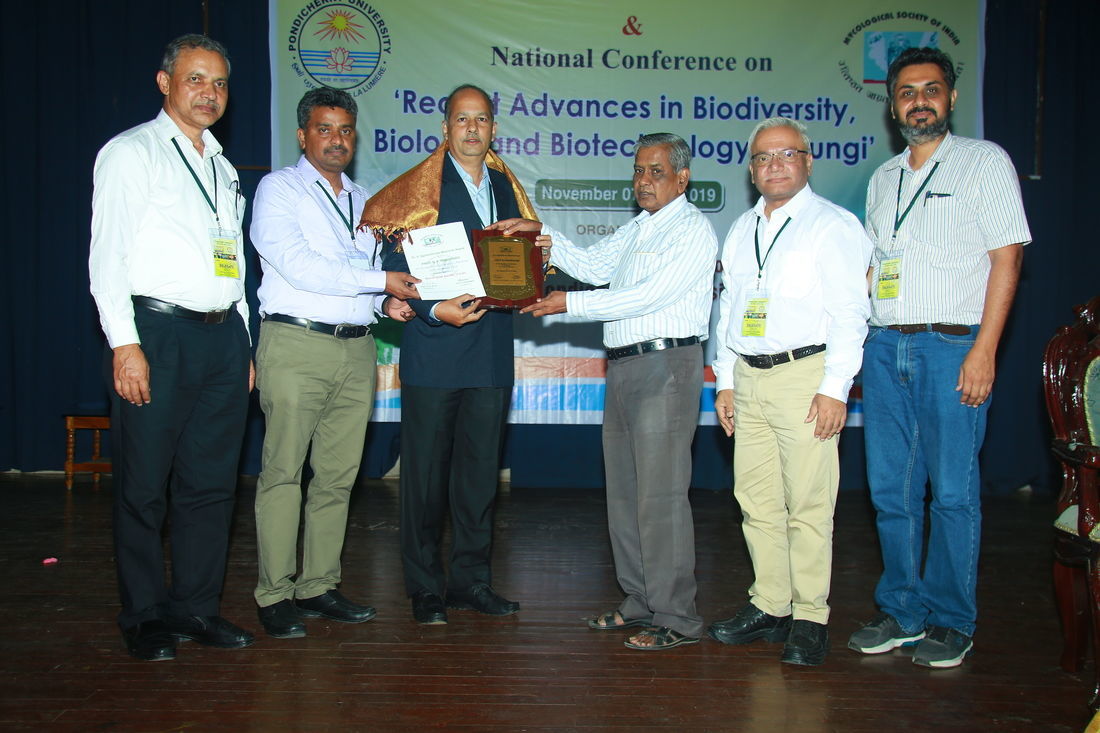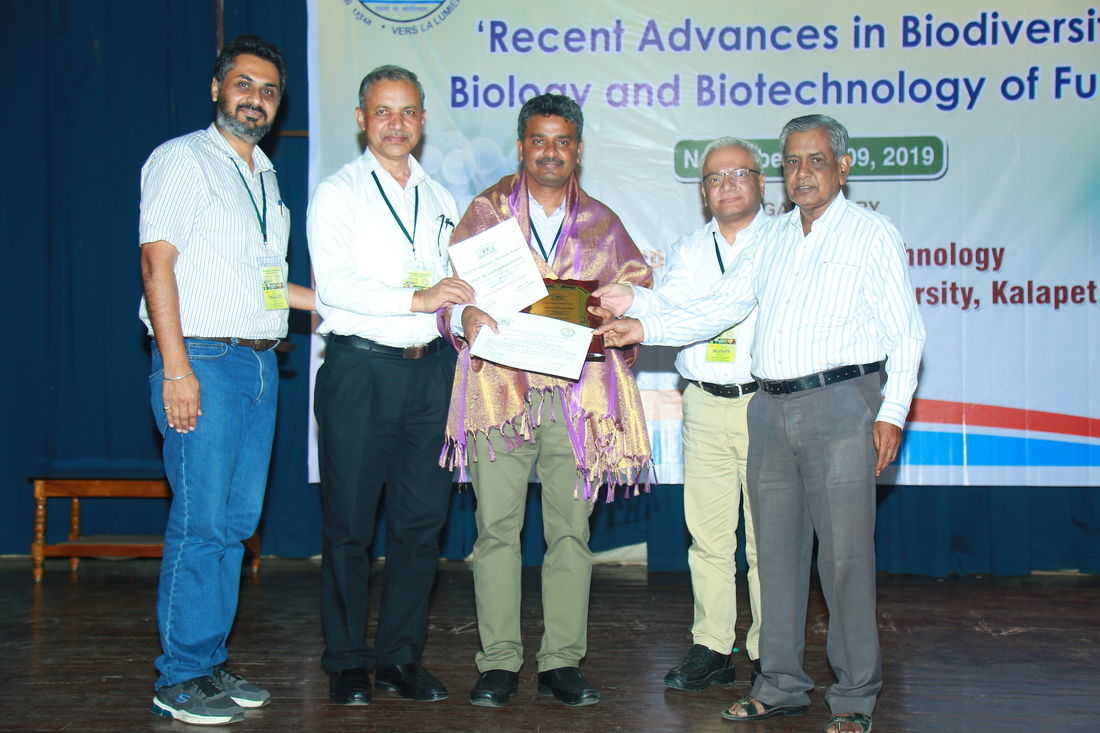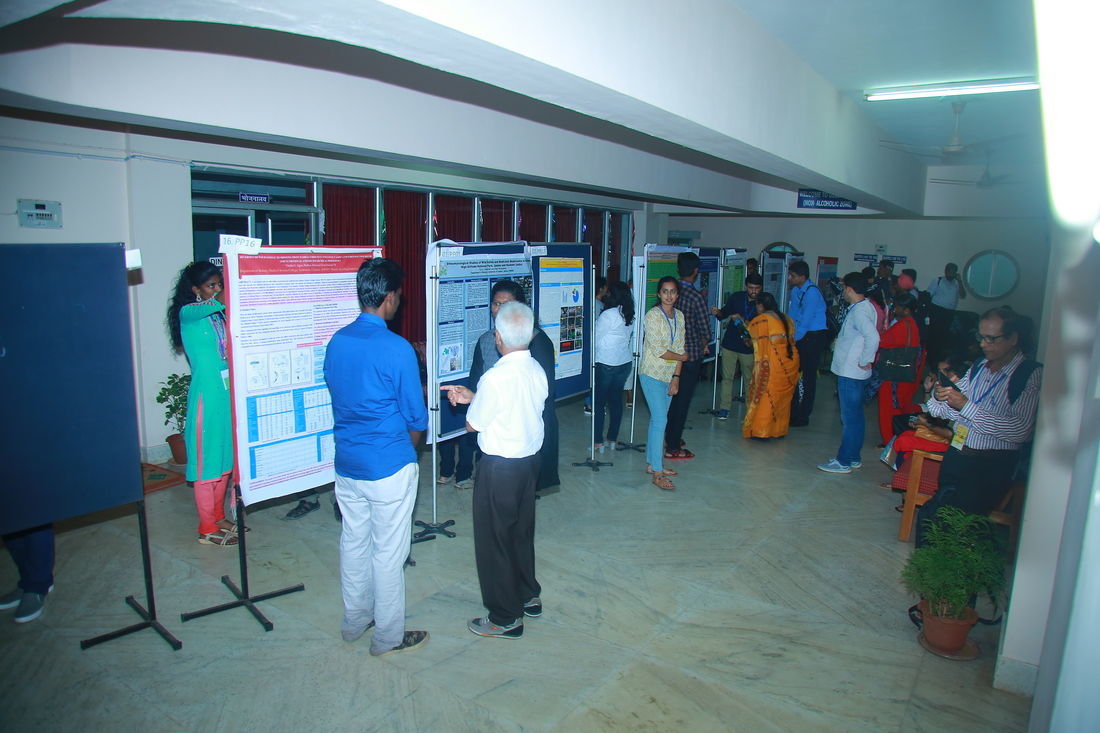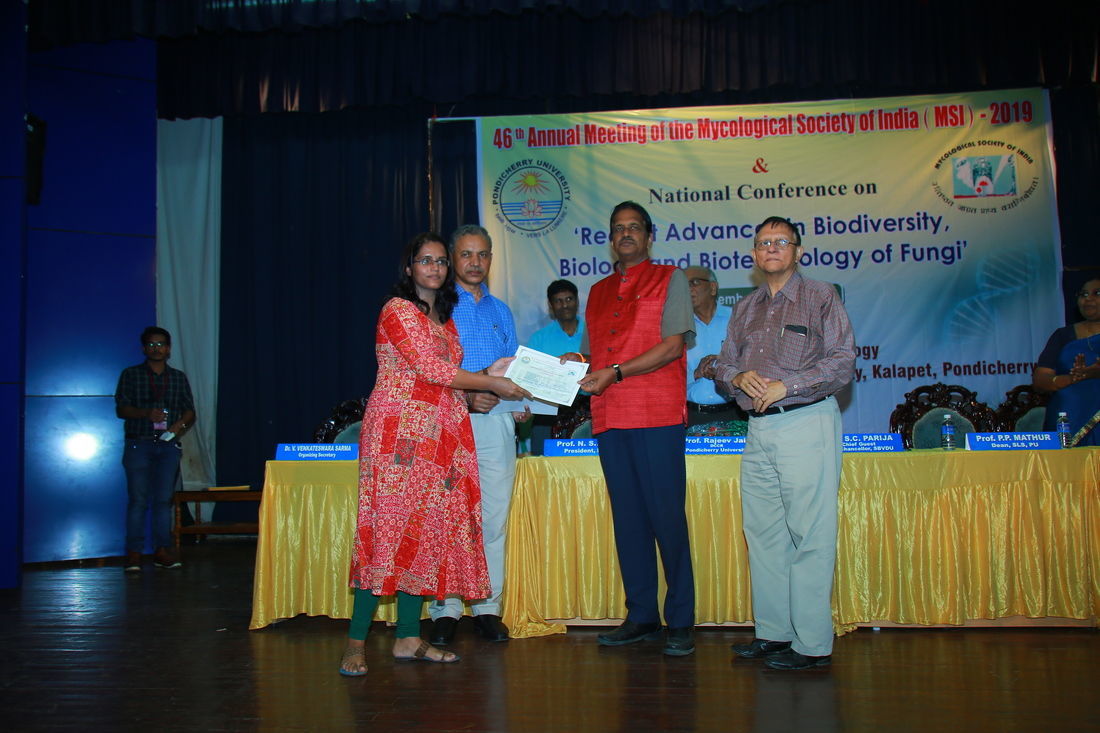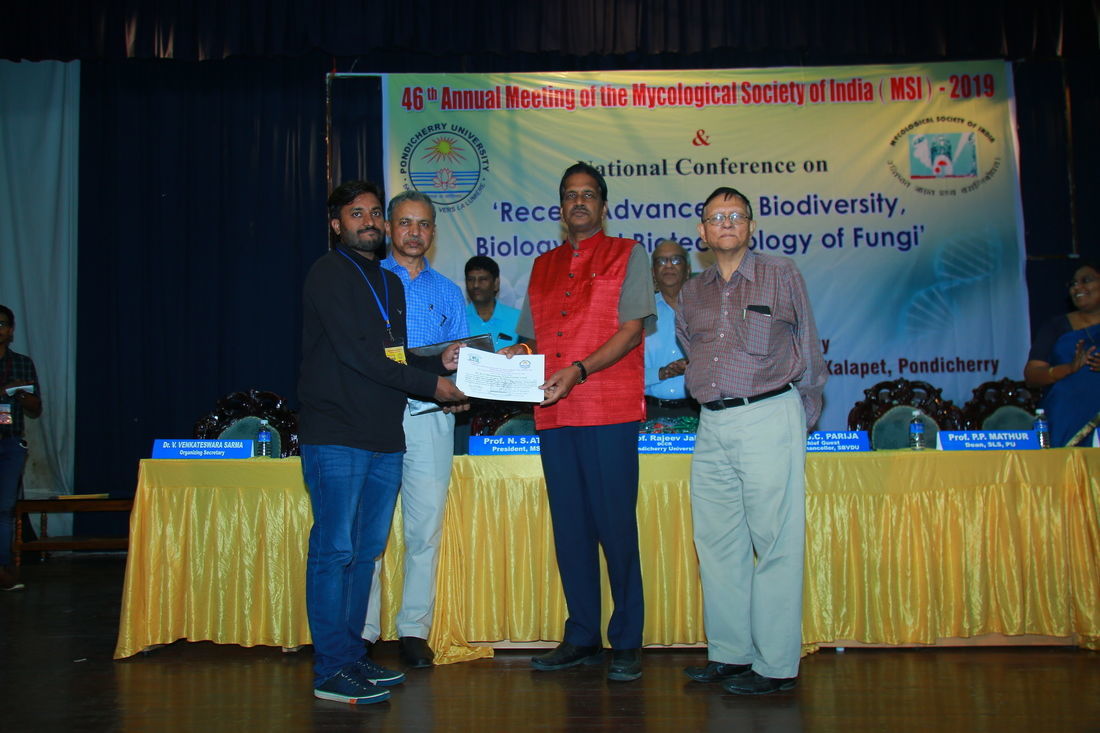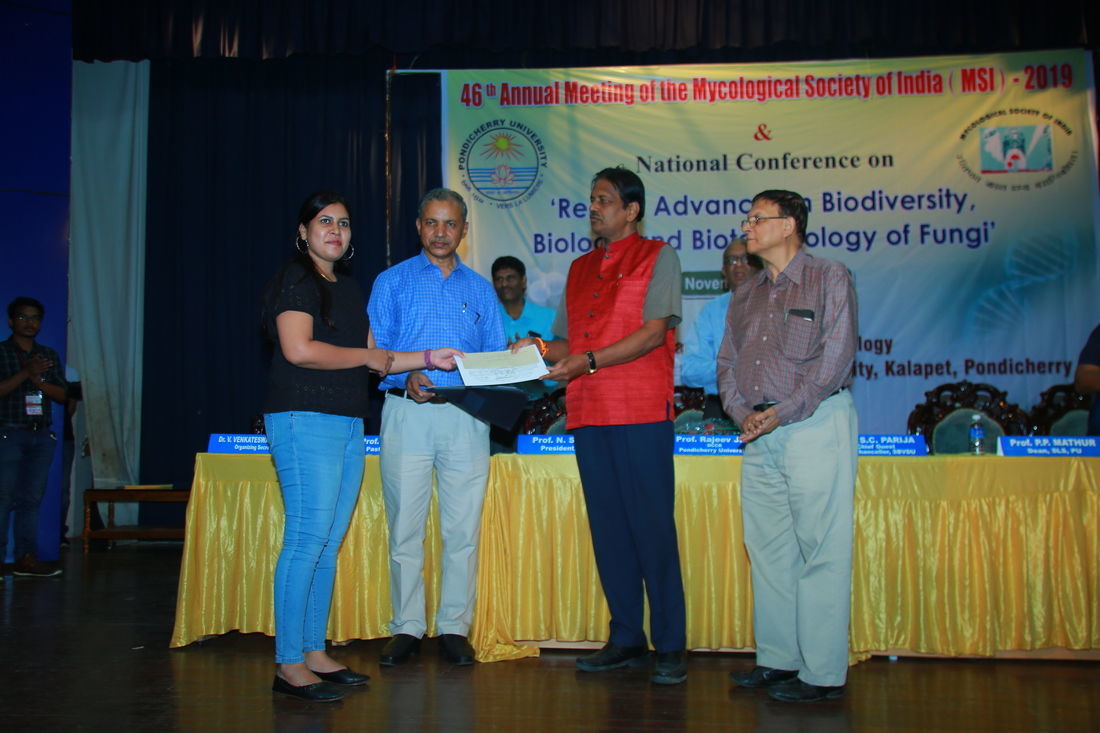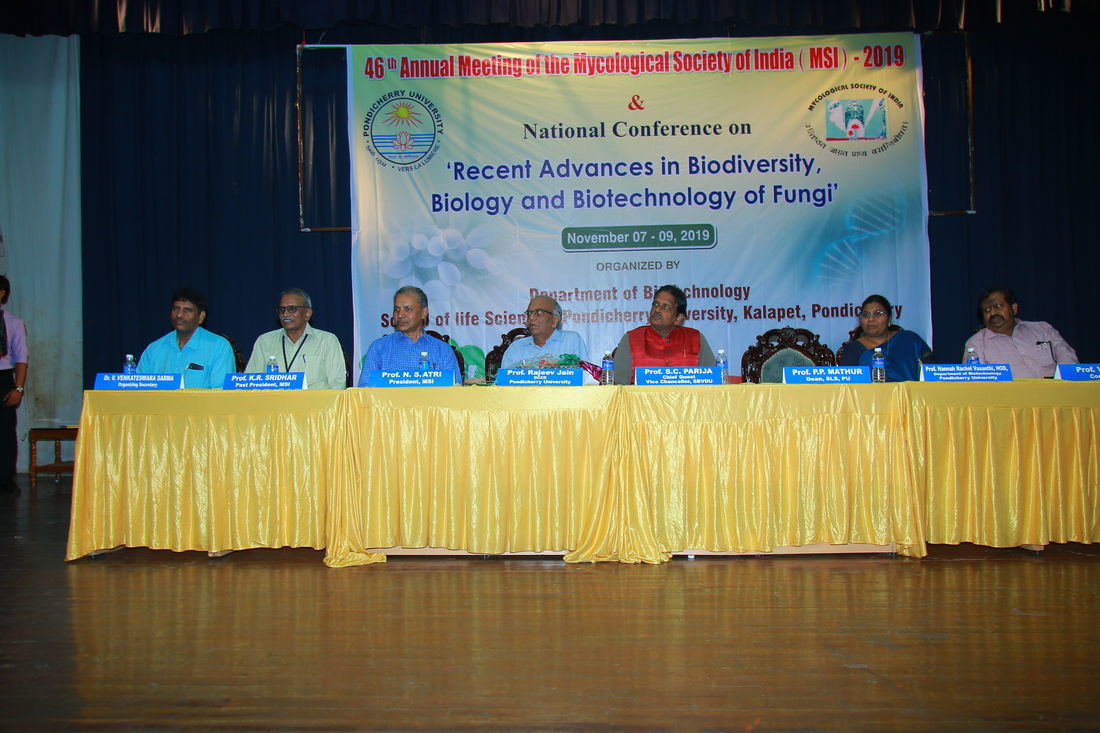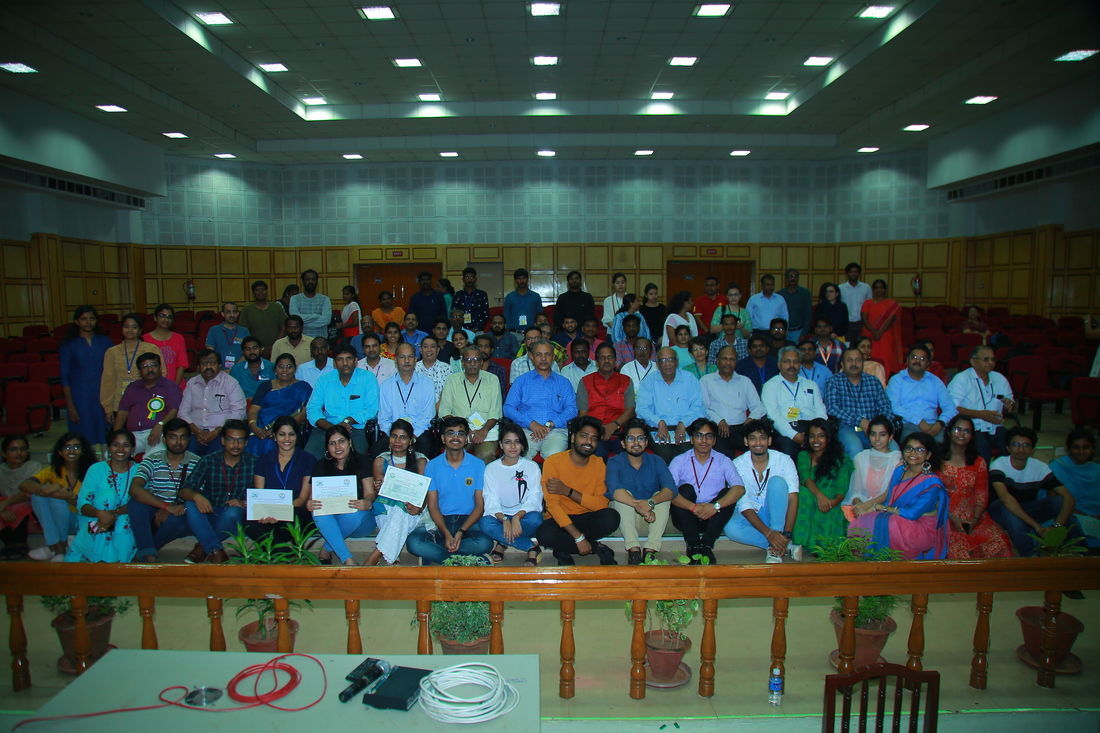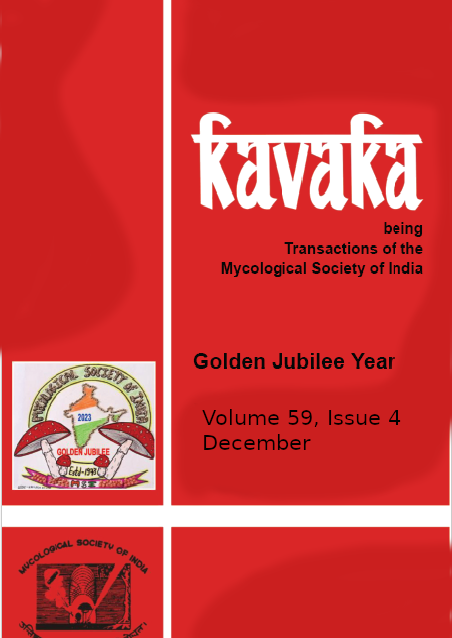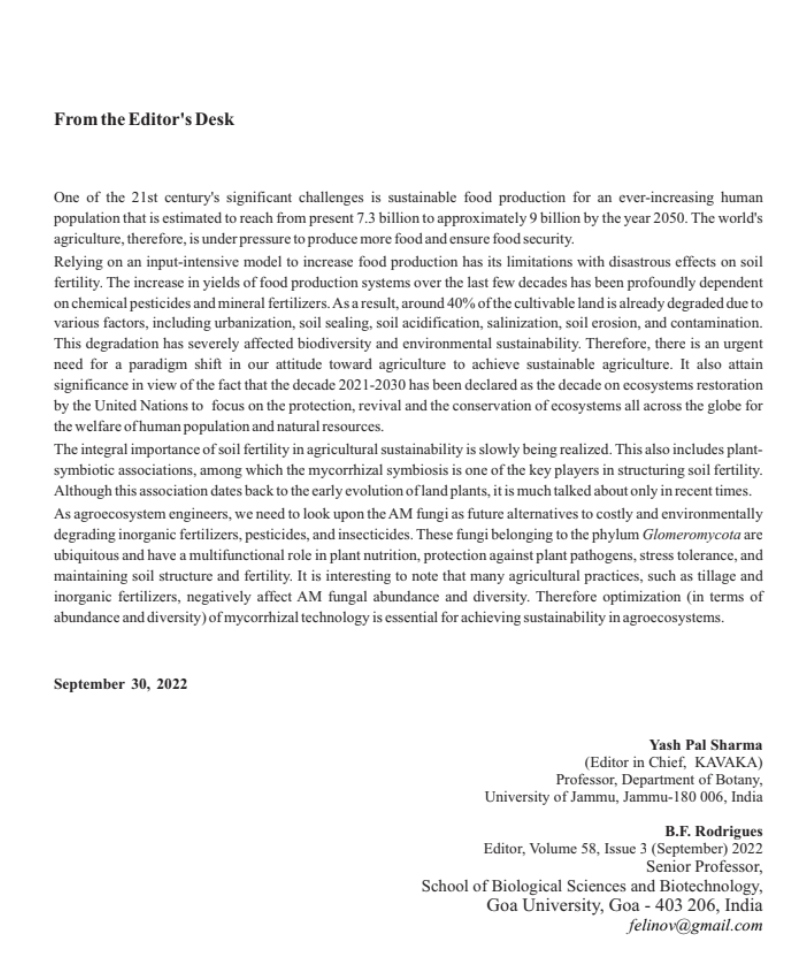
Immunodetection of Rhizophagus fasciculatus and Gigaspora gigantea in soil and root tissues in Citrus reticulata, their exploitation as bioinoculants and cellular localization of defense enzymes following induced immunity developed against Fusarium solani
B.N. Chakraborty1* and Sanjita Allay2
1Department of Biological Sciences, Aliah University, New Town, Kolkata 700 016
2Department of Botany, Sambhu Nath College, Labpur 731303
*Corresponding author Email: This email address is being protected from spambots. You need JavaScript enabled to view it.
(Submitted on July 15, 2022; Accepted on September 05, 2022)
ABSTRACT
Two dominant arbuscular mycorrhizal (AM) fungi Rhizophagus fasciculatus and Gigaspora gigantea, their colonization with root tissues in Citrus reticulata along with their scanning electron microscopic views have been presented. Immunological formats for the detection of these two AM fungi were developed. IgG raised against R. fasciculatus and Gi. gigantea were used for immunodetection of AM fungal spores in soil labeled with FITC conjugates following an indirect immunofluorescence test. AM fungal spores showed a bright apple green fluorescence which was distributed throughout the spore wall. Subtending hyphae also gave apple green fluorescence. Spores with their hyphae were more prominent in the rhizosphere. Ultrathin sections of AM fungal colonized root stained with toluidine blue confirmed the presence of fine arbuscule branches within the root cells. Immunogold localization of AM fungi in mandarin roots was demonstrated. The gold particles were mostly concentrated near the cell wall. R. fasciculatus and Gi. gigantea were tested singly and in combination for their effect in inhibiting root rot of mandarin seedlings caused by F. solani in field conditions. Joint inoculation with AMF could effectively reduce disease incidence, correlated with increased accumulation of defense enzymes such as chitinase, b-1,3-glucanase, peroxidase, and phenylalanine ammonia-lyase. Cellular localization of chitinase in mandarin root and leaf tissues have been demonstrated following indirect immunofluorescence test using PAb raised against chitinase and labeled with FITC. Immunogold localization of chitinase following immunity induced by AM fungi in mandarin plants against F. solani confirmed the immunofluorescence results. It precisely showed the sites of chitinase expression as intense black gold particles distributed throughout the cell structure in mandarin roots.
Keywords: Plant immunity, Mandarin, AM fungi, Defense enzymes
Dual inoculation with AM fungus Funneliformis mosseae and PGPR Bacillus sonorensis enhances growth of brinjal seedlings raised in pro trays
P. Chandini1, R. Ashwin2 and D.J. Bagyaraj2*
1Department of Agronomy, Centurion University of Technology and Management, Odisha -761211
2Centre for Natural Biological Resources and Community Development (CNBRCD), 41 RBI Colony, Anand Nagar, Bangalore, Karnataka-560024, India.
*Corresponding author Email: This email address is being protected from spambots. You need JavaScript enabled to view it.
(Submitted on June 27, 2022; Accepted on August 19, 2022)
ABSTRACT
Investigation was conducted in pro trays to evaluate the effect of dual inoculation with the AM fungus Funneliformis mosseae + PGPR Bacillus sonorensis in enhancing the growth of brinjal seedlings. Different growth parameters like shoot and root length, total seedling length, stem diameter, fresh and dry weight of seedlings, biovolume index, plant strength, vigour index, NPK uptake and mycorrhizal root colonization were monitored. The results brought out that the seedlings treated with the microbial consortium showed significantly improved growth compared to uninoculated seedlings. The increase in biovolume index and dry weight of inoculated seedlings was 110% and 300% more, respectively, compared to uninoculated seedlings. The NPK uptake in inoculated seedlings were 98, 83 and 10% more, respectively, than the uninoculated seedlings
Keywords: Bacillus sonorensis, Dual inoculation, Funneliformis mosseae, Nursery Technology
New record of Ascorhizoctonia praecox (Tricharina praecox) from India
Aroosa Jan Mattoo and Skarma Nonzom*
Department of Botany, University of Jammu, Jammu, J&K, India-180006
*Corresponding author Email: This email address is being protected from spambots. You need JavaScript enabled to view it.
(Submitted on May 13, 2022; Accepted on August 21, 2022)
ABSTRACT
Tricharina, an interesting genus among the most complex genera of order Pezizales in class Pezizomycetes is known for its cup-shaped fruiting bodies. However, interspecific distinctions and correct identifications are difficult on the basis of morphological features. So far, single species of the genus Tricharina has been recorded from India. However, we recovered Ascorhizoctonia praecox (Tricharina praecox) while exploring the endophytic mycobiome of Ephedra gerardiana. This study highlights the first authentic report of the species being recorded for India. A comprehensive analysis of morphological, molecular, and phylogenetic details is carried out
Keywords: Pezizomycetes, Endophyte, Phylogeny, Ladakh, New record
Seasonal variations in diversity and distribution of arbuscular mycorrhizal fungi in mangrove species of Indian East and the West coast
Sankrita Gaonkar1* and B.F. Rodrigues2
1Department of Botany, Govt. College of Arts, Science and Commerce, Quepem, Goa - 403 705
2Department of Botany, Goa University, Teleigao Plateau, Panjim, Goa - 403 206
*Corresponding author Email: This email address is being protected from spambots. You need JavaScript enabled to view it.
(Submitted on June 21, 2022; Accepted on August 08, 2022)
ABSTRACT
The impact of arbuscular mycorrhizal (AM) fungi on the diversity and successional pattern of the plant population have stimulated the necessity to identify the factors maintaining their diversity and abundance. The present study investigated AM fungal communities colonizing the roots of three plant species, Avicennia marina (Forssk.) Vierh., Bruguiera cylindrica (L.) Blume and Excoecaria agallocha L. in two different Indian coasts, Chorao Island, Goa, and Pichavaram Forest, Tamil Nadu, to varying seasons. The results of the present study revealed that root colonization, spore density, and relative abundance varied among the three plant species in all seasons. The highest root colonization and spore density were detected in pre-monsoon and monsoon, respectively. The two coastal habitats hosted different AM fungal communities. Chorao Island presented the dominance of AM fungal species belonging to the family Acaulosporaceae, while there was the dominance of Glomeraceae at Pichavaram Forest. The study revealed that the season, host plant, and soil properties influence AM fungal symbiosis. The CCA indicated that the soil attributes such as OC, N, Mn, Zn, and Fe significantly influenced the abundance of Acaulospora, Funneliformis, Gigaspora, and Sclerocystis. In contrast, EC affected the Rhizophagus, Glomus, and Entrophospora species.
Keywords: Canonical correspondence analysis, Dominant species, Relative abundance, Root colonization, Spore density
Co-cultivation of Aspergillus nidulans with Actinoplanes utahensis for the production of echinocandin B nucleus, a precursor of an antifungal agent anidulafungin
M.C. Shivakumar and J. Savitha*
Department of Microbiology and Biotechnology, Bangalore University, Bangalore - 560056.
*Corresponding author Email: This email address is being protected from spambots. You need JavaScript enabled to view it.
(Submitted on February18, 2022; Accepted on June 29, 2022)
ABSTRACT
Anidulafungin is a potent antifungal compound derived from echinocandin B, a cyclic hexapeptide with a linoleoyl side chain having antifungal activity. However, echinocandin B is known to exhibit red blood cell haemolysis which was a major concern. This was addressed through an enzymatic deacylation of the linoleoyl side chain with acylase derived from the fermentation broth of Actinoplanes utahensis (NRRL 12052). The acylase is a membrane bound enzyme which catalyses the cleavage of the linoleoyl group of echinocandin B, a key step in the anidulafungin production. Purification of echinocandin B produced by Aspergillus nidulans is a time consuming and also loss of product is more during recovery process. The bioconversion of echinocandin B to echinocandin B nucleus by Actinoplanes utahensis is the additional and limiting factor in the production of anidulafungin. An attempt is made in the present study to resolve this by using the concept of co-culture technique which has reduced the two-step purification process to single step process. Aspergillus nidulans and Actinoplanes utahensis are cultured separately in submerged medium and then pooled together to continue the fermentation process for a fixed time. This resulted in the formation of echinocandin B nucleus, thereby reducing the purification process for echinocandin B. The co-cultivation strategy of fungi and actinomycetes has proved to be a novel method of producing natural products with various biological activities. This work focuses on the significant co-cultivation fermentation process which enhances the production of echinocandin B nucleus.
Keywords: Aspergilllus nidulans, Actinoplanes utahensis, Co-culture, Acylase, Bioconversion
Symbiotic response of fodder cowpea (Vigna unguiculata L.) and field bean (Lablab purpureus L.) with different arbuscular mycorrhizal fungi
P. Ranadev1, R. Ashwin1, N. Anuroopa2 and D.J. Bagyaraj1*
1Center for Natural Biological Resources and Community Development (CNBRCD), Bengaluru 560 024
2Department of Microbiology, Nrupathunga University, Nrupathunga Road, Bengaluru 560 001
*Corresponding author Email: This email address is being protected from spambots. You need JavaScript enabled to view it.
(Submitted on June 12, 2022; Accepted on August 25, 2022)
ABSTRACT
Fodder cowpea and field bean are the minor legumes cultivated mainly in arid and semi-arid tracts of India. Species of arbuscular mycorrhizal (AM) fungi known to improve plant growth may not have the same effect on all the plants due to host preference. Hence, screening and selecting the efficient AM fungus for each crop is important for maximum symbiotic response. The information available on the response of fodder legumes to AM fungal inoculation is meager. Hence a pot culture experiment was conducted to screen and select the efficient AM fungi for inoculating cowpea and field bean. The screening was done with ten different species of AM fungi (Acaulospora laevis, Gigaspora margarita, Glomus bagyarajii, Claroideoglomus etunicatum, Rhizophagus fasciculatus, Rhizophagus intraradices, Ambispora leptoticha, Glomus macrocarpum, Funneliformis caledonius and Funneliformis mosseae). Plant parameters like height, stem girth, bio-volume index, the biomass of shoot and root, and the percent mycorrhizal root colonization were recorded according to the standard procedures. In the present study, the two legumes differed slightly in their response to inoculation with different AM fungi. Giving weightage to shoot biomass, being fodder legumes, it was concluded that Funneliformis caledonius is the best AM fungus for inoculating cowpea and field bean.
Keywords: AM fungi, Mycorrhizae, Glomus, Fodder legumes, Symbiosis
Aging increases arbuscular mycorrhizal fungal diversity in iron ore mine sites
M.J. Bukhari1* and B.F. Rodrigues2
1Department of Botany, Govt. College of Arts, Science and Commerce, Quepem 403 705 Goa.
2Department of Botany, Goa University, Taleigao Plateau, 403 206, Goa.
*Corresponding author Email: This email address is being protected from spambots. You need JavaScript enabled to view it.
(Submitted on June 28, 2022; Accepted on August 10, 2022)
ABSTRACT
Arbuscular mycorrhizal (AM) fungal colonization, spore density, and AM fungal richness were assessed with mine age. Iron ore mines with ages ranging from 10 to 50 years located in the state of Goa constituted the study sites. Most of the selected plant species assessed from recently mined areas also had higher colonization levels. However, AM fungal spore density increased with the increase in the age of mines. Spores of a total of 39 AM fungal species were isolated and characterized from various mine sites. Among the AM fungal species Acaulospora spinosa was most dominant (30-90%) followed by Glomus macrocarpum (20-80%), Acaulospora scrobiculata (60%), Racocetra gregaria (20-60%), Cetraspora pellucida (30-50%), and Gigaspora margarita (10-40%). Shannon's diversity index was highest at the oldest mine site and least at the recently mined site. In contrast, Simpson's dominance index was highest in the recently mined area and least at the oldest site. Diversity indices were more significant in the well-established mine than in the recently degraded mine. The study indicates that the severity of disturbance, the harshness of the site, low inoculum levels, edaphic characteristics, and time are known to influence the rate of AM fungi. Thus, revegetation of any disturbed site can occur over time with high species richness and diversity of AM fungi. They are essential in establishing a healthy plant community and facilitating plant succession.
Keywords: Arbuscular mycorrhizal fungi, Disturbance, Diversity, Mine spoils
Fine root endophyte association in widely cultivated palms of southern India
Balachandar Mayakrishnan, Koshila Ravi Ravichandran and Muthukumar Thangavelu*
Root and Soil Biology Laboratory, Department of Botany, Bharathiar University, Coimbatore-641046, Tamilnadu, India
*Corresponding author Email: This email address is being protected from spambots. You need JavaScript enabled to view it.
(Submitted on July 08, 2022; Accepted on September 06, 2022)
ABSTRACT
The palm family represents one of the largest plant families of monocotyledons with mycorrhizal symbiosis. However, palms were never examined for the mycorrhizal symbiosis formed by fine root endophyte (FRE) fungi. Therefore, the present study was undertaken to examine the prevalence and intensity of FRE symbiosis in Borassus flabellifer, Caryota urens, Cocos nucifera, Cyrtostachys renda, Dypsis lutescens, and Roystonea regia cultivated in Tamilnadu. Further, the physicochemical properties of soils of these palm species were analyzed. The results of the present study revealed the presence of FRE colonization in all the examined palm species. There was a significant variation in the soil characteristics and the percentage of root length with different FRE fungal structures except for FRE hyphal coils among the palm species. The percentage of total root length colonization (%TRLC) by FRE fungi ranged from 24.32% (R. regia) to 47.18% (C. nucifera). Soil pH was significantly and negatively correlated to the percentage root length containing hyphae, arbuscules, and % TRLC of FRE fungi. To the best of our knowledge, this is the first report on the prevalence of FRE fungal colonization in the studied palm species. This FRE fungal association may aid the growth of the cultivated palms as the endophytic fungal symbiosis
Keywords: Arecaceae, Cocos nucifera, Fine Hyphae, FRE Colonization, Planticonsortium tenue
Diversity and bioactive potential of fungal endophytes associated with Ocimum tenuiflorum L. grown under different shade net conditions
K. Yuvarani1, V. Prabhakar1, T. Janaki1, T.S. Murali2 and V. Kumaresan1*
1Department of Botany, Kanchi Mamunivar Govt. Institute for Postgraduate Studies and Research (Autonomous). Lawspet, Puducherry 605 008, India.
2Department of Biotechnology, Manipal School of Life Sciences, Manipal Academy of Higher Education, Manipal, Karnataka 576 104, India
*Corresponding author Email: This email address is being protected from spambots. You need JavaScript enabled to view it.
(Submitted on May 25, 2022; Accepted on August 28, 2022)
ABSTRACT
Fungal endophytes were screened from tulsi (Ocimum tenuiflorum) grown under different shade net conditions. One hundred different isolates of endophytes (belonging to 31 species) were obtained from tulsi from all the three treatments viz., 75% shade, 35% shade and open conditions (no shade). Most number of isolates and species were recorded from tulsi grown under 75% shade net condition. Phyllosticta capitalensis was found to be a dominant endophyte. A comparison of endophyte assemblage across different treatments showed that maximum coefficient of similarity between any two treatments was 0.51. Alternaria sp. (isolates OTE2 and OTE4) showed activity against both bacterial pathogens with both the isolates inhibiting both Gram +ve and Gram -ve bacteria. Morphological and phylogenetic analysis using Internal Transcribed Spacer Sequence revealed that isolates OTE2 and OTE4 were A. burnsii.
Keywords: Medicinal plants, Endophytes, Ocimum, Shade net
Arbuscular mycorrhizal fungi and host-plant relationship with respect to heavy metal remediation of soil
Saloni Gulati1 Anita Narang2, Anupama Shukla2, Roma Katya1, Rashmi Mathur3 and Jasleen Kaur1*
1Department of Botany, Dyal Singh College, University of Delhi, India
2Department of Botany, Acharya Narendra Dev College, University of Delhi, India
3Department of Botany Sri Aurobindo College, University of Delhi, India
*Corresponding author Email: This email address is being protected from spambots. You need JavaScript enabled to view it.
(Submitted on July 19, 2022; Accepted on September 20, 2022)
ABSTRACT
A multitude of contaminants have entered the environment and are harmful to living beings. Agricultural plantations growing in unfavourable environments undergo various abiotic stresses due to heavy metals. These factors reduce plant growth and pose a threat to the plant population. Various traditional techniques are used to remove contaminants from the contaminated soil, like incineration, soil washing, chemical precipitation, soil excavation, detonation, and many more. Recently, phytoremediation is proving to be very effective as a green method of soil remediation and involves using plants to extract, sequester and detoxify pollutants. Many recent studies have shown that using hyperaccumulators associated with efficient endophytic or rhizosphere microbial communities is efficient in enhancing phytoremediation. In this context, arbuscular mycorrhizal (AM) fungi may be a highly suitable contender because they are an indispensable member of rhizosphere microflora. Their application to hyperaccumulators is important. The combined effect of both can improve the efficiency of the remediation process by shortening the mitigation cycle and can help maintain the stability and persistence of remediation. This review will explain two main aspects of AM fungal-plant relationship with respect to HM remediation of soil.
Keywords: Heavy metals, Soil remediation, Phytoextraction, Phytostabilization

